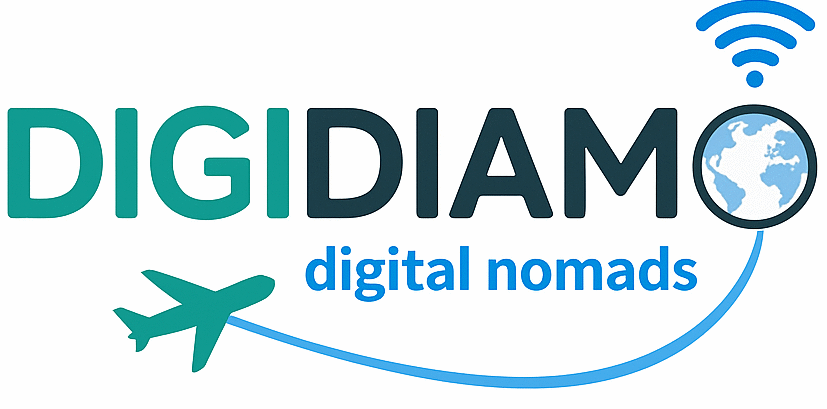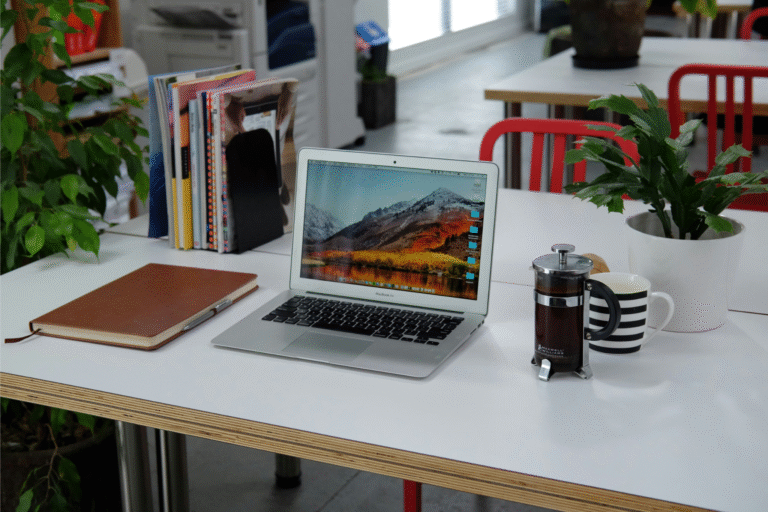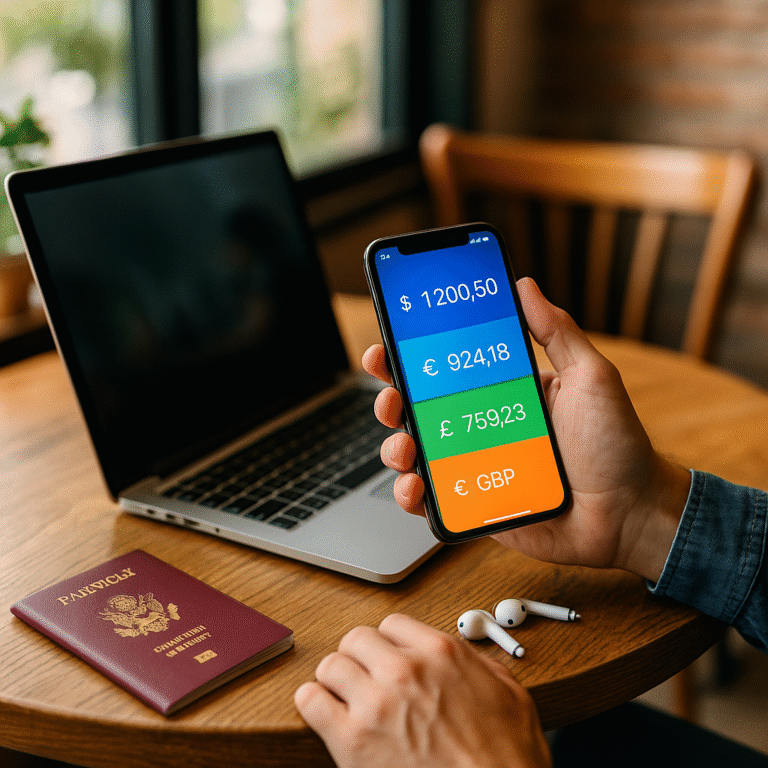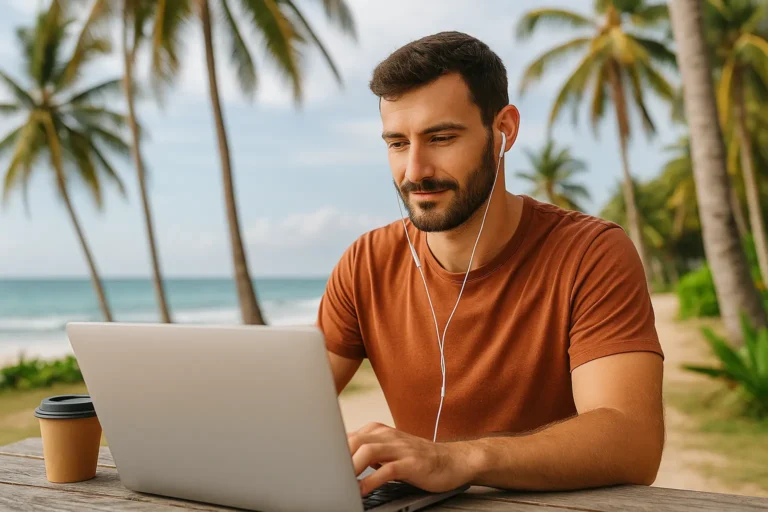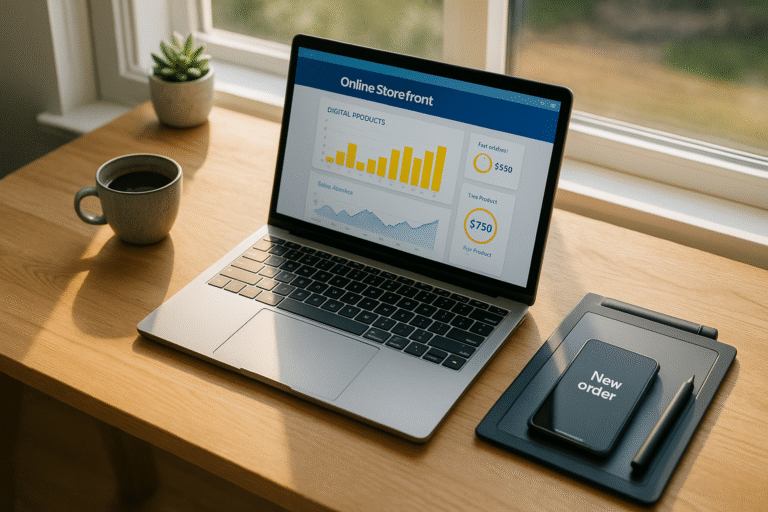What Is a Digital Nomad?
The wish to earn a living without staying in one place has grown fast during the last decade. I began chasing Wi-Fi signals across borders in 2016, and each year the scene expands. Before you pack a bag, it helps to know exactly what being a digital nomad means. This page breaks down the mindset, the work setups, the daily rhythms, and the hurdles that come with a borderless career. If you need the full roadmap visas, safety nets, and long-term planning my comprehensive digital nomad guide fits that bill.

A clear definition
A digital nomad earns income through online work while moving between locations, often every few months or even weeks. The work is remote by design, not a temporary perk. The travel is purposeful, yet flexible. Some stay in a single region to avoid visa stress; others hop continents to chase seasons. What ties the tribe together is a belief that life should be shaped around experiences, not square office walls.
The roots of the movement
Remote work existed long before the label “digital nomad” became popular. Freelance programmers and travel writers have worked on the road for decades. Three forces made the lifestyle mainstream:
- Cloud tools turned laptops into portable offices.
- Coworking spaces offered reliable desks and community.
- COVID-19 nudged companies to accept remote teams.
By 2025, the term is no longer fringe. Governments now launch “digital nomad visas” to lure knowledge workers, and banks market borderless accounts to the group.
Core values and mindset
Most nomads I meet share a few simple values.
Autonomy
Freedom over time and place sits at the top. We choose when to log in and where to wake up. It demands discipline, but the payoff is spacious mornings and the option to surf at lunch.
Minimalism
Constant travel punishes excess baggage. A nomad learns to trim life down to the essentials: one carry-on, a checked bag for gear, plus cloud storage for memories.
Curiosity
Living in new cultures feeds creativity and empathy. We study local customs, taste street food, and pick up fragments of new languages. Learning never stops.
Community
The myth of the lone wanderer is fading. Telegram groups, coworking hubs, and slow-travel events make it easy to find friends on the same path. Shared dinners beat hotel isolation every time.
Typical work setups
Nomads blend four main income models.
- Remote employment – Full-time staff roles done fully online. Stable pay and benefits, though time-zone overlap can be tricky.
- Freelancing – Selling skills on contracts. High flexibility, higher client-finding effort.
- Online entrepreneurship – Running e-commerce, SaaS, or niche content sites. Passive revenue is possible but takes sweat.
- Teaching and coaching – Live calls, recorded courses, or bootcamps. Works well when paired with strong personal branding.
Many start with freelancing, then shift to mixed streams to soften income swings.
Daily life on the road
Morning routine
I wake around seven, meditate, and brew black coffee. Fast Wi-Fi decides the spot an Airbnb desk, a rooftop coworking area, or a quiet café.
Work blocks
I segment tasks into focus sprints. Deep work first: writing, strategy, design. Calls next, slotted in late afternoon to sync with European clients. Noise-canceling headphones buffer street sounds.
Breaks
Instead of water-cooler chats, breaks involve strolling to a local market or squeezing in a beach swim. Movement sparks fresh ideas.
Evenings
After sunset I join language exchanges, pickup football, or potluck nights. Building a local routine prevents travel fatigue.
Myths vs. reality
Myth: Unlimited vacation time
Reality: Travel days often double as lost workdays. A reliable income still needs steady hours.
Myth: It is cheap everywhere
Reality: Flight costs, coworking fees, and health insurance add up. Budget management is key.
Myth: The lifestyle suits everyone
Reality: Some crave rootedness, family proximity, or structured offices. Self-honesty saves pain.
Key challenges and how to address them
Visa limits
Most tourist stamps last 30 to 90 days. Digital nomad visas extend stays up to a year or more but may ask for proof of income or health insurance. Always research rules before landing.
Time zones
Client calls at 2 a.m. crush productivity. Pick bases aligned with your main market. Asia works for US night owls; Europe aligns well with Africa and the Middle East.
Loneliness
Changing cities monthly can feel disorienting. Slow down. Stay three months per location. Attend meetups, volunteer, or join sport groups to form deeper bonds.
Healthcare
Global health plans cover emergencies but can be pricey. Some nomads pair local insurance in long-stay countries with travel insurance for short trips. Carry digital copies of medical records.
Finances and taxes
Income across borders can trigger double taxation. Use borderless bank accounts and consult a tax adviser who understands expat rules. Keep clean books from day one.
Is the lifestyle right for you?
Ask four questions:
- Do you thrive on change or prefer routine?
- Can your work run fully online?
- Will distance strain key relationships?
- Are you prepared to self-manage savings and benefits?
A honest audit beats Instagram envy. If the answers lean positive, the rewards can be life-shaping.
Packing essentials
- Lightweight laptop with strong battery life
- Universal USB-C charger and adaptable plug kit
- Noise-canceling headphones
- VPN subscription for secure banking
- Cloud backups plus a small SSD for local copies
- Quick-dry clothing and a compact rain shell
- Basic first aid kit and travel-friendly meds
Pack less than you think you need. You can buy forgotten items on arrival.
Setting your first base
Choose a city that scores well on three pillars:
- Connectivity – 50 Mbps or higher internet.
- Cost – Rent under 30 percent of projected income.
- Community – Coworking hubs, language exchanges, or nomad meetups.
Cities like Lisbon, Tbilisi, and Mexico City remain popular. Emerging spots include Dakar and Chiang Rai. Give yourself a month to settle and test routines before moving on.
Sustainable travel habits
Frequent flights raise carbon footprints. Aim to travel overland when possible, offset emissions, and support local businesses. Slow travel enriches both the host community and your own experience.
Conclusion
Living as a digital nomad blends work with curiosity, but it also demands planning and resilience. If you feel ready to turn skills into a passport-powered career, start mapping goals, income streams, and a realistic travel schedule. When you reach that stage, my guide to the best remote jobs for digital nomads can help you find roles that fund your new life while keeping your laptop light and your possibilities wide open.
